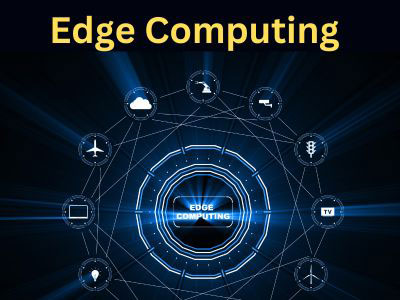Key Takeaway
Edge computing is not just a software; it’s a combination of hardware and software. The hardware includes devices like sensors and gateways, while the software enables local data processing and real-time decision-making.
Edge computing relies on specialized software to handle data collection, analysis, and communication between devices, making it a broader technology stack.
Understanding Edge Computing as a Concept and Technology
Edge computing is a technology that processes data closer to the source, such as IoT devices, rather than relying solely on centralized cloud data centers. By doing so, it reduces latency, improves bandwidth, and enhances data security. The primary benefit is real-time data analysis, which is crucial for applications like autonomous vehicles, smart cities, and industrial automation. Edge computing empowers devices to make local decisions without sending vast amounts of data to the cloud. As this technology grows, it is becoming central to various industries, improving operational efficiency and enabling quicker responses.

The Role of Software in Edge Computing Infrastructure
Software plays a critical role in the functionality and optimization of edge computing infrastructure. The edge computing model requires robust and scalable software solutions to manage data processing, storage, and communication between devices and centralized systems. At the edge, devices are often distributed across various locations, and the software needs to ensure seamless coordination and efficiency.
The most common software components in edge computing include edge orchestration tools, which help manage the deployment of applications across edge devices, and edge analytics software, which processes data locally for faster insights. Additionally, software frameworks, such as containerization and microservices, are often used to deploy applications across multiple edge devices in a scalable and manageable way.
Security software also plays a significant role in edge computing, as the distributed nature of edge systems can create vulnerabilities. Software for encryption, data integrity, and access control are essential to protect sensitive information being processed at the edge.
Difference Between Edge Hardware and Software
Edge hardware and edge software are two essential components of edge computing systems, each playing a critical role in data processing and management at the network’s edge.
Edge hardware refers to the physical devices that are responsible for collecting, processing, and transmitting data. These devices include sensors, gateways, routers, IoT devices, and specialized edge computing servers. Edge hardware is designed to operate in environments where low latency and local data processing are essential. For example, industrial machines in factories use edge hardware to monitor equipment status and prevent downtime by detecting anomalies in real time. Edge hardware typically has limited computational power compared to cloud servers but is optimized for specific tasks, such as real-time decision-making or data filtering.
Edge software, on the other hand, refers to the applications, operating systems, and algorithms that run on edge hardware. This software enables the hardware to perform specific functions, such as data collection, analysis, and local storage. Edge software may include AI models, data analytics tools, or security protocols designed to run locally on the device. For instance, edge software can be used to filter out irrelevant data, analyze sensor readings, or enable machine learning models to make real-time decisions without relying on the cloud.
Key Software Solutions for Edge Computing Deployment
The deployment of edge computing systems requires a suite of specialized software solutions designed to facilitate the efficient operation of edge devices, manage data processing, and ensure seamless integration with the cloud. These software tools are essential for handling the complexities of distributed architectures, providing security, and enabling real-time data processing. Some of the key software solutions for edge computing deployment include edge orchestration platforms, containerization technologies, and AI-powered analytics software.
Edge orchestration platforms play a crucial role in managing and deploying edge applications across a wide range of devices. They help administrators automate the configuration, scaling, and management of edge resources, ensuring efficient use of local computing power. For example, platforms like Kubernetes and Docker are used for containerizing applications, allowing them to be deployed seamlessly on different edge devices while minimizing overhead and maximizing flexibility.
How Edge Computing Uses Both Hardware and Software
Edge computing combines both hardware and software to deliver efficient local processing and real-time decision-making. On the hardware side, edge devices like sensors, gateways, and industrial computers collect data and perform initial analysis. These devices are typically small, low-power units designed to operate in diverse environments, from factories to outdoor locations. They may include specialized components such as GPUs or custom chips for handling complex tasks like machine learning or image recognition.
The software layer enables data processing, analytics, and management of edge devices. Edge computing software includes operating systems, application frameworks, and security protocols that allow for local computation, data filtering, and storage. It also ensures that data is transmitted securely to the cloud for further analysis or archiving when necessary. Additionally, software helps in managing the orchestration of edge nodes and ensuring that they communicate seamlessly with other parts of the infrastructure.
The integration of hardware and software in edge computing enables real-time insights and decision-making, critical for industries like healthcare, manufacturing, and autonomous vehicles. By optimizing both layers, edge computing reduces latency and improves system performance, ensuring that data is processed where it is most needed.
Conclusion
Edge computing is not a software by itself but rather an infrastructure or computing model that encompasses both hardware and software components. It involves the deployment of edge devices, edge nodes, and software applications that process data locally, close to the point of origin. The software in edge computing includes algorithms, data management tools, and real-time analytics applications that work in conjunction with edge hardware to process and analyze data efficiently. Therefore, edge computing is a combination of hardware and software systems designed to enable faster and more efficient data processing.
